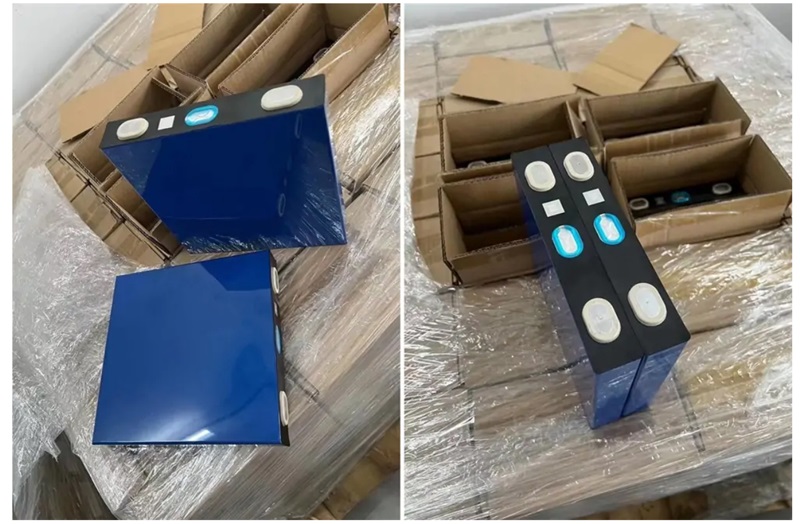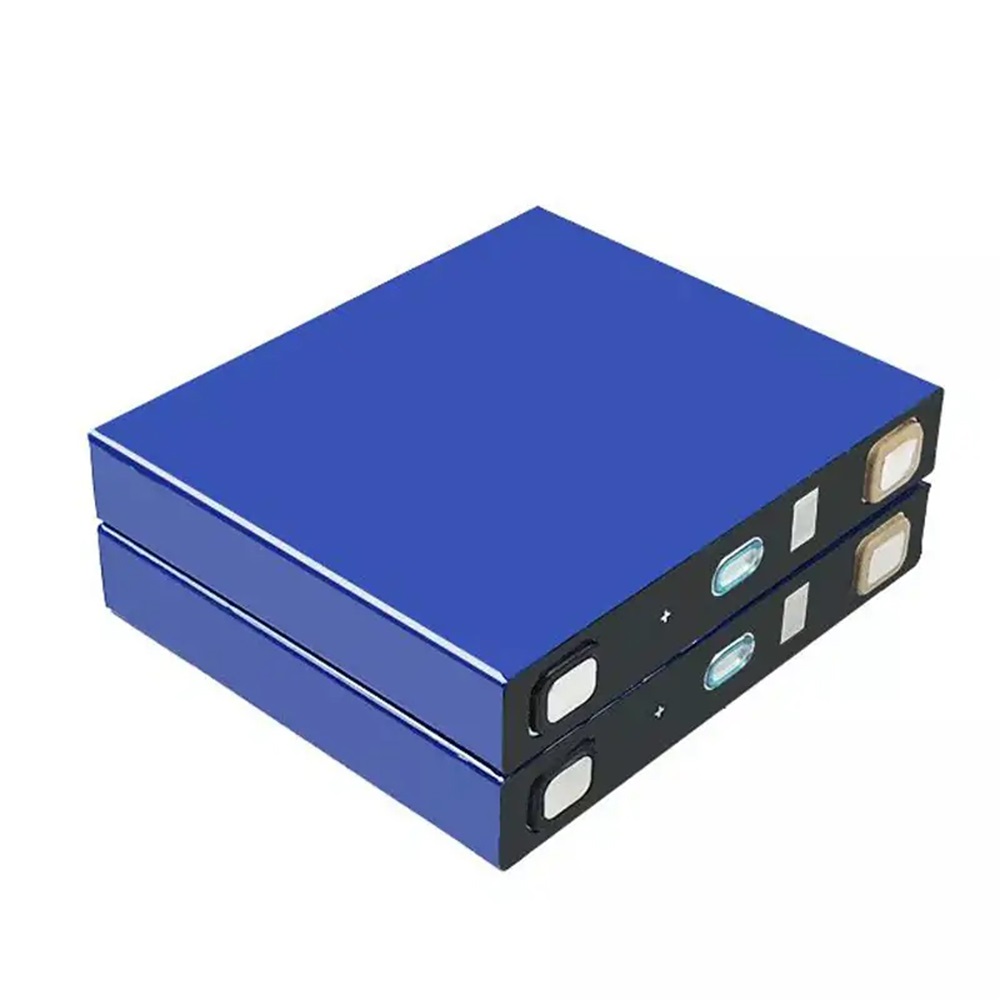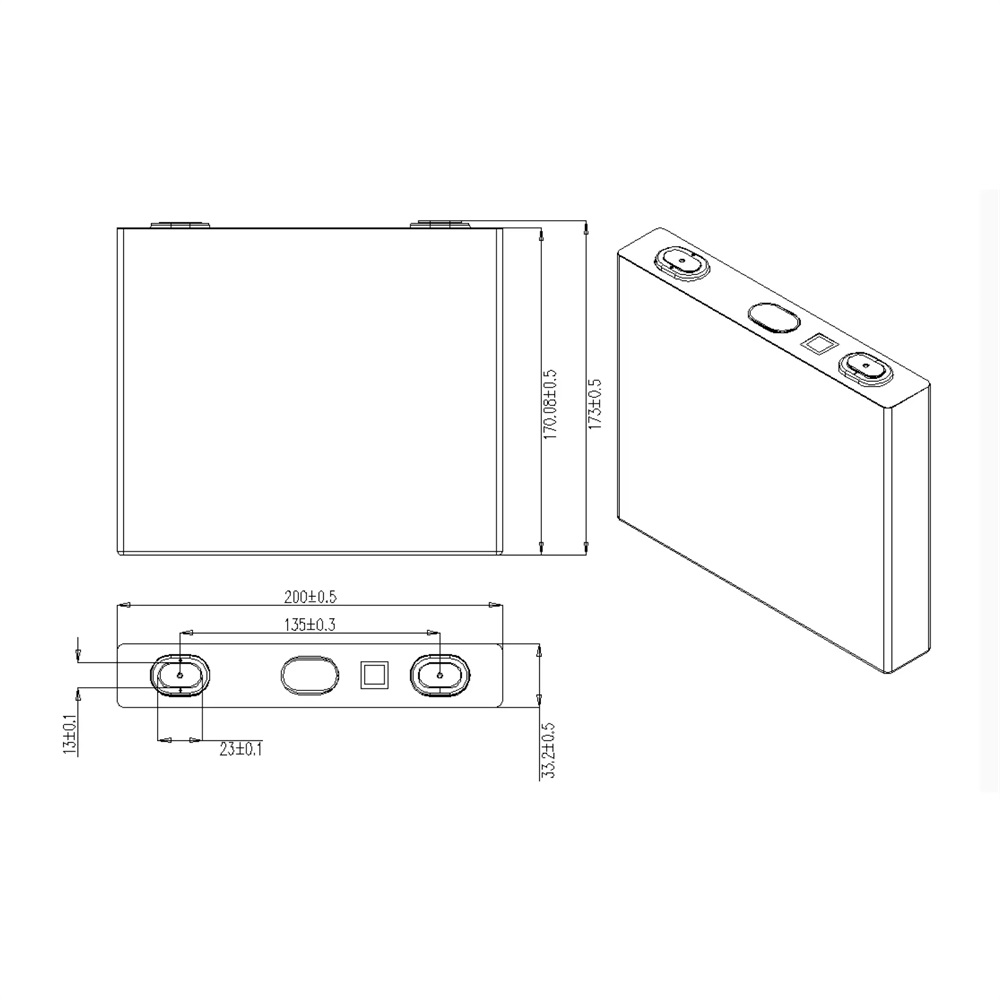LiFePO4 Power Battery Cell LP33200173-125Ah
3.2V 125Ah Lithium ion LiFePO4 Power battery Cell LP33200173-125Ah
- Category: LiFePO4 Battery Cell
- Tag: lifepo4 battery cell
The 3.2V 120Ah and 125Ah lithium-ion phosphate battery lishen cells are applied in many territories, such as PV charging system, DIY PV household BESS system, utility vehicle, EV and more, we provide rigorous test for the battery products to assure the quality build, engaging the connection between the customer experience and the our excellent build quality.
Specifications
Item | Specification |
Cell Type | Lithium-ion power cell |
Cell Model | LP33200173-125Ah |
Nominal Capacity | 125Ah (The NEW BATTERY) |
Nominal Voltage | 3.2V |
AC-impedance(1000Hz) | ≤0.5mΩ |
Weight | 2450±100g |
Maximum Charge Current at Room Temperature
| 1C(Continuous)2C (60s) |
Charging Voltage | 3.65V |
Maximum Discharge Current at Room Temperature | 1C(Continuous)3C (60s) |
Discharge End Voltage | 2.5V(>0℃)、2.0V(≤0℃)
|
Max Operating Temperature Range | Charge: 0℃ ~ 60℃
|
Discharge: -30℃ ~ 60℃ | |
Optimal Operating Temperature Range
| Charge: 15℃ ~ 35℃ |
Discharge: 15℃ ~ 35℃ | |
Storage Temperature | 1 month: -40℃~ 45℃ |
6 months: -20℃ ~ 35°C | |
Cycle life | 3000cycles @80%DOD |
Dimension | 173*33.2*200mm |
Weight | 2450±100g
|

Caution
1. Charge
a) NO over-charge,the charge voltage should not be over 3.65V.
b) NO reverse charging
c) The charge temperature range is 0℃~ 60℃.Charging will stop when any part of the battery reaches 60℃.
d) Optimal charge temperature range is 15℃ ~ 35℃。Do not charge for a long time in outsidethe optimal temperature range.
2. Discharge
a) No short circuit
b) The end of discharge voltage must be over 2.0V.
c) The discharge temperature range is -30℃~ 60℃.Charging will stop when any part of the battery reaches 60℃.
d) Optimal discharge temperature range is 15 ℃~ 35℃. Do not discharge for a long time in outsidethe optimal temperature range.
3. Put cells away from children
4. Storage and Usage
a) For any short time storage (in one month), cell should be in a clean and dry area(humidity ≤65% RH)and at -40℃ ~+45℃ at 20~40%SOC .
b) For any long time storage (in 6 month), cell should be in a clean and dry area(humidity ≤65% RH)and at -20℃ ~+35℃ at 20~40%SOC.
c)During the course of storage or usage, keep the cells upright .
5. Waring
1. Avoid overheat in any circumstances. Don’t modify or disassemble the battery. It will be dangerous, and may cause ignition, heating, leakage or explosion.
2. Don’t put cells in overheat circumstances or disposed in fire ,don’t put cells under the sunshine.
3. Don’t short-circuit positive(+) and negative(-) terminals. Keep away from metal or other conductive materials. Jumbling the batteries of direct contact with positive(+) and negative(-) terminals or other conductive materials may cause short-circuit and may even cause fire and explosion.
4. Don’t reverse the positive (+) and negative (-) terminals.
5. Don’t put cells in water or other conductive liquids or let cells absorb a moisture.
6. Don’t impact cells excessively.
7. Don’t solder the battery directly. Excessive heating may cause deformation of the battery components such as the gasket, which may lead to the battery swelling, leakage, explosion, or ignition.
8. Don’t use abnormal cell which has damages by shipping stress, drop, short or something else, and which gives off electrolyte odor.
9. Don’t contact cans directly or with other conductive materials during the using process.
10. Keep away form static circumstances during storage and using.
11. Don’t use cells together with other one-shot batteries and secondary batteries. Don’t use cells together with different packages, types and brands.
12. Stop using and process the cells accordingly when the following circumstances happened:getting hot sharply, smelling, changing colors, deformation or others.
13. If there is leaked electrolyte from batteries, please scrub it away with fresh water to avoid any skin discomfort.

